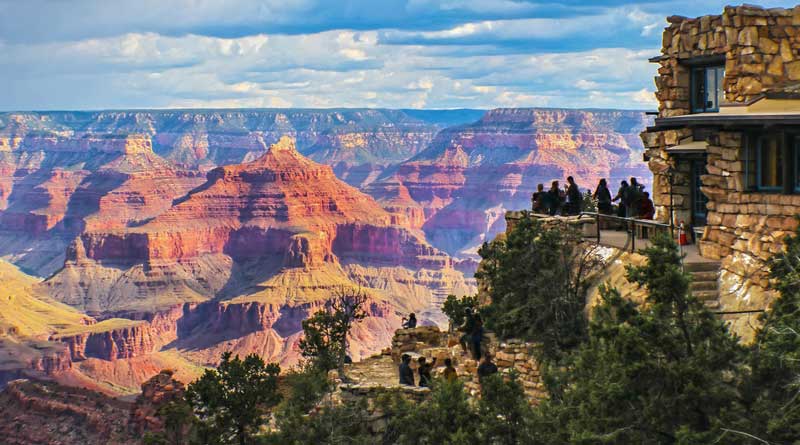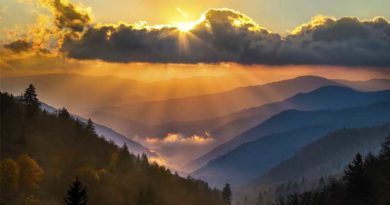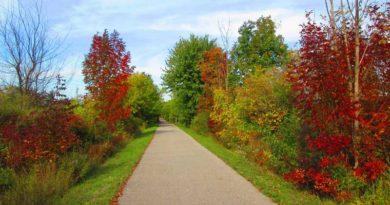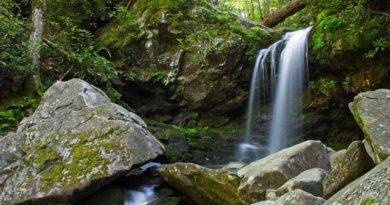The 6 Must-Do Hiking Trips in the Grand Canyon
Each year millions of people from all over the world come to visit the Grand Canyon. In 2017, the number of visitors crossed 6 million. The downside of being of such a popular hiking place in the world is that it is crowded. But don’t let that discourage you from planning a backpacking trip to the Grand Canyon. You don’t expect it to be the best hiking destination in the world for nothing, do you? There must be, of course, some of the best backpacking trips in the Grand Canyon that attract so many hikers every year from around the world.
You can look at the Grand Canyon as an inverted 6000-feet, a 277-mile long mountain range where you feel so insignificant against the ever-climbing stone walls that feel like they go as high as the sky. The fall containing plateaus, peaks, and gorges so vast is extremely disorienting. This disorientation increases as you descend downhill. With 385 of established trails, 277-miles river to float, and countless panoramic and historical sites, it’s hard to know where to start. This is a list of the best backpacking trips in the Grand Canyon to help you make your decision easy.
1. Rim-to-Rim
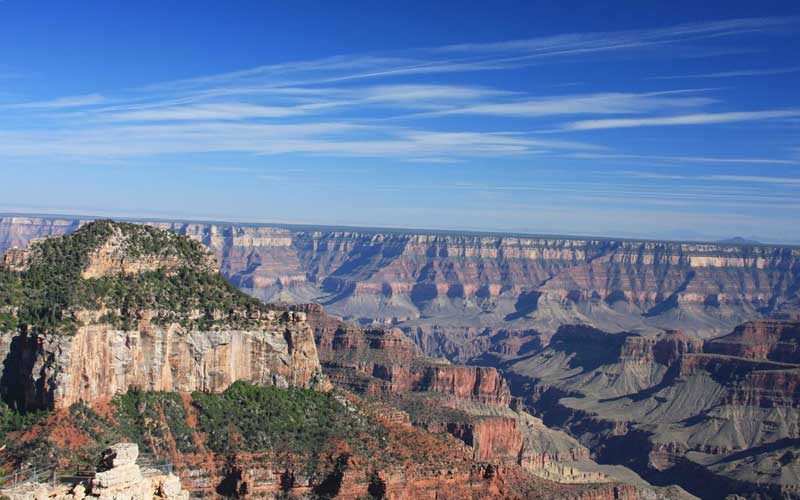
The Rim-to-Rim hike in the Grand Canyon is a 44-mile round trip which usually takes almost 5-7 days to complete. It is one of the longest hikes in the Grand Canyon there is. What makes Rim-to-Rim so special is that it provides you the opportunity to experience both rims and everything in between.
According to hikers, it is no piece of cake. It is a strenuous hike and requires a lot of endurance. But if you train for the hike beforehand and you have studied well and know what to expect, then it can become one of the most memorable hikes in your life.
The famous Rim-to-Rim hike is in the central portion of the Grand Canyon known as The Corridor. It is where 90% of the activities in the Grand Canyon happen. It is where the famous Phantom Ranch is located. The Corridor is the result of a minor fault line known as the Bright Angel Fault creating relatively moderate routes that have taken people in and out of the Colorado River for hundreds of years. The trails in The Corridor are the North Kaibab Trail, South Kaibab Trail, and Bright Angel Trail.
2. Hermit Trail
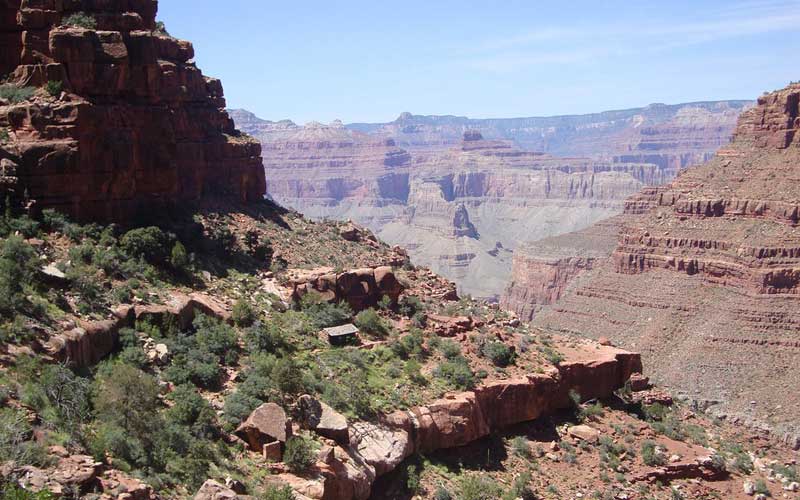
The Hermit Trail provides a 4.5 mile round trip with a 1,760-feet return elevation gain. It is a rocky unmaintained trail that leads to views into the Hermit Canyon and is a good day hike option. The Hermit Trail lets you see the trail from a unique perspective. The beauty of the abyss resonates differently and personally to each viewer.
Grand Canyon’s backcountry is a richly diverse wilderness and a rugged and complex environment. This backpacking and camping trip on the Hermit Trail explores part of the canyon accessible only to a lucky few.
The campground at the Hermit Creek sits beside one of the never-ending waterways within the Grand Canyon which are located at 3,800-feet below the trailhead and South Rim. The hike in is long and contains some of the most dramatic views that can be seen from any trail.
According to the National Park Service, the Hermit Trail can be intense. The upper portion is steep and sustained. It drops almost 2,000 vertical feet in the first 2.5-mile. Fossilized animal tracks can be viewed in the Coconino Sandstone along the way. The trailhead is located just beyond Hermit’s Rest on the Hermit Road. You can also take a shuttle bus to get there.
3. Havasu Falls
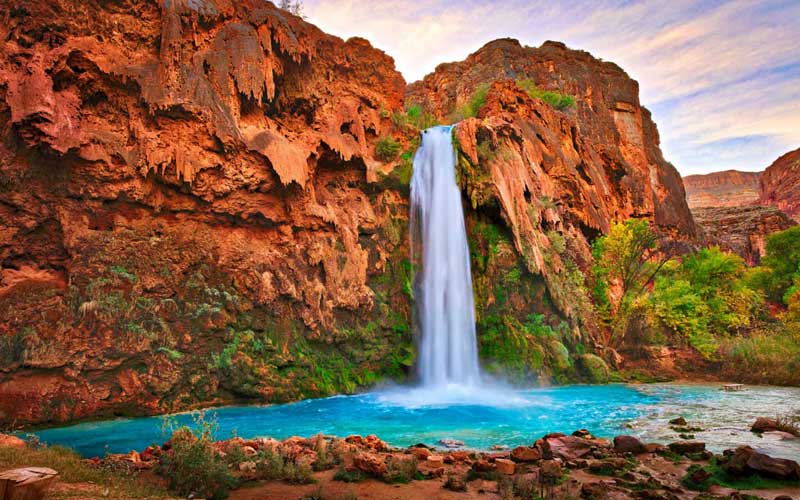
The Grand Canyon waterfalls at the Havasupai Indian Reservation is a must backpacking trip for the Grand Canyon enthusiast. It is a fairly easy hike down to the Supai village. You can get your permit and some supplies from there. From the village, it is another 2-mile hike until you reach the campground just passing the Havasu Falls.
You can set up your tent to claim your spot. After that, you can hike another half mile down the trail to Mooney Falls. Mooney Falls has plenty of places to relax and swim. You can cool off in the creek or below the waterfalls, there are many ways for you to enjoy there. The scenery is amazing as well.
You can hike down the Canyon some more the next day to reach Beaver Falls. It is a good point to enjoy your lunch. You can hike another 5-miles to the Colorado River. But the people who know the place don’t bother to leave the turquoise water of Havasupai for the muddy Colorado River.
The place can be a paradise and you can have a really memorable trip but the place is overcrowded. The beautiful waterfalls make up for the shortcomings of the campsite. Just check the weather before going. The canyon has had numerous flash floods and stranded tourists or even swept them away.
4. Grandview Trail
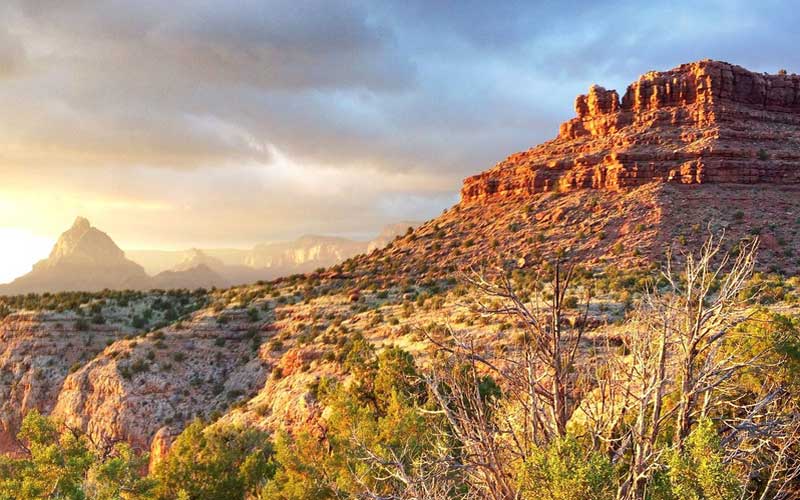
The Grandview Trail is a backpacking trip into a remote and quiet area of the Grand Canyon. It has amazing views along with great natural and cultural history, which includes a 19th-century mine and a miner’s cabin. It is a great camping site with plenty of solitude. Introverts will especially like this place. It also lets you reach the Colorado River via a historic trail that is rarely used today.
As soon as you start the hike, you will know why it is called the Grandview Trail. The stunning panoramic views of the Grand Canyon and the Colorado River are overwhelming. The scenery continues as you descend to Horseshoe Mesa, which extends into the Canyon with expansive views in every direction.
To the west of Messa is the Cottonwood Creek. You can expect exciting hiking, camping at remote desert oases, incredible views of the Inner Gorge and Colorado River and possibly of reaching the Colorado River via the Old GrandviewTrial. Circle around the Horseshoe Mesa and reascend back to the South Rim completing one of the best loop hikes in the Canyon.
The Grandview Trailhead is located at the site of the former Grandview Point Hotel – one of the first Grand Canyon lodging options. The location of the hotel was chosen for its stunning vistas as well as access to the mining sites within the Canyon.
5. South Kaibab Trail
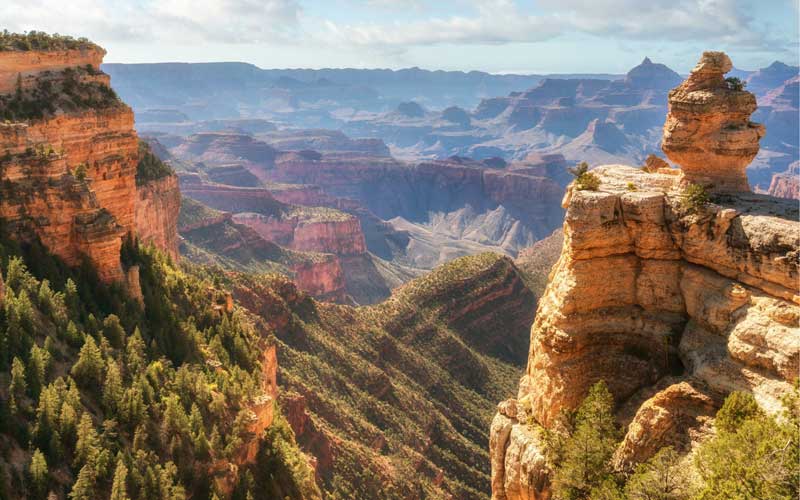
If you really want to see the Grand Canyon, this is it. The 3-day backpacking trip will take you down into the Canyon where few people visit. The South Kaibab Trail is steep, has no shade and water. But the views are gorgeous. It is best to start from South Kaibab and hike down to Bright Angel campground and back up the Bright Angel Trail. This way, you hike up where there is more available water and a change of scenery.
You can start by taking the National Park Service shuttle to the South Kaibab trailhead. The South Kaibab trail is 6.5-miles long going all the way down to the Colorado River. It is the most direct way to get to the bottom of the Canyon. The trail has few switchbacks in the beginning. After the initial switchbacks, you reach the Ooh-Aah Point, the first panoramic view of the canyon.
As you hike down, you will come across several vista points like Cedar Ridge, Skeleton Point, and Tipoff before finally reaching to the campground. In order to camp here, you need a backcountry permit which you have to apply in advance. The campground is along the Bright Angel Creek and it has tap water, bathrooms with sinks and even a restaurant in the nearby Phantom Ranch.
You can hike the bottom of the Canyon for as long as you camp there and start moving up the North Rim via the Bright Angel Trail. On your way up, you will find two rest houses at 1.5-miles and 3-miles from the Rim. It has restrooms as well as stations to refill water.
6. Bright Angel Trail
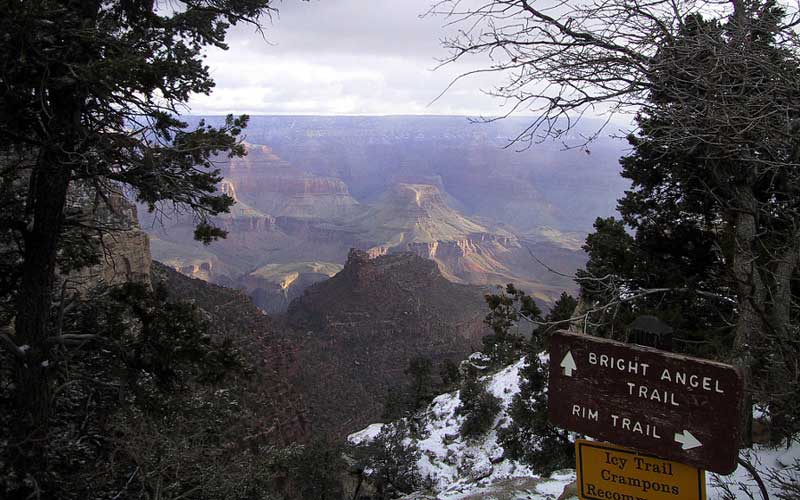
The Bright Angel Trail is a good long day option being a classic route into the Grand Canyon. It is a 9.2-mile roundtrip to the spring at the Indian Garden, an age-old campground. This exciting backpacking trip descends into the canyon from the South Rim down to the Indian Garden.
Bright Angel Trail was used for centuries by native tribes and was improved by prospects in the late 19th century and tourists were charged to use it. In 1928, the park service established itself as the overseeing body for the Grand Canyon National Park and began maintaining the trail for public.
The hike consists of beautiful breathtaking vistas around each turn and temple peaks rising out of the bottom of the Grand Canyon floor as the trail descends downwards over three thousand feet going through geological art formed in a timeline of one billion years. After a tiring descend, you will reach the Indian Garden.
At this point, you can continue along the trail from where you can take the South Kaibab Trail back to the rim. But you do not want to miss your chance to spend a night or even two in the Indian Garden where you can enjoy the shade and the oasis of this stunning campsite.

